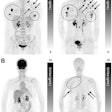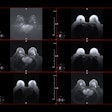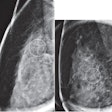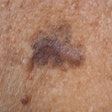Presenter Dr. Leah Portnow will share results from a study that explored the following:
- The effect of BI-RADS fifth edition guidelines on interreader agreement regarding visual mammographic density assessment compared with previously used BI-RADS fourth edition criteria
- The distribution across density categories using the two editions
- The agreement between visual and quantitative volumetric density assessments in the two editions
For the study, seven breast imaging radiologists reviewed 200 screening digital mammograms in two sessions, using the BI-RADS fourth edition in one session and the fifth edition in the second.
The team found that interreader agreement between the two guideline versions was comparable when it came to assessing disease, but statistically significant differences existed between the two versions when it came to assessing density (p < 0.0001): 57% of mammograms were categorized as C (heterogeneously dense) or D (extremely dense) using the fifth edition compared with 46.7% using the fourth edition.
"Breast imaging readers in this study placed significantly more mammograms in the dense categories using BI-RADS 5th edition guidelines, which has implications for patients due to density legislation encouraging enhanced surveillance," the group concluded.



















